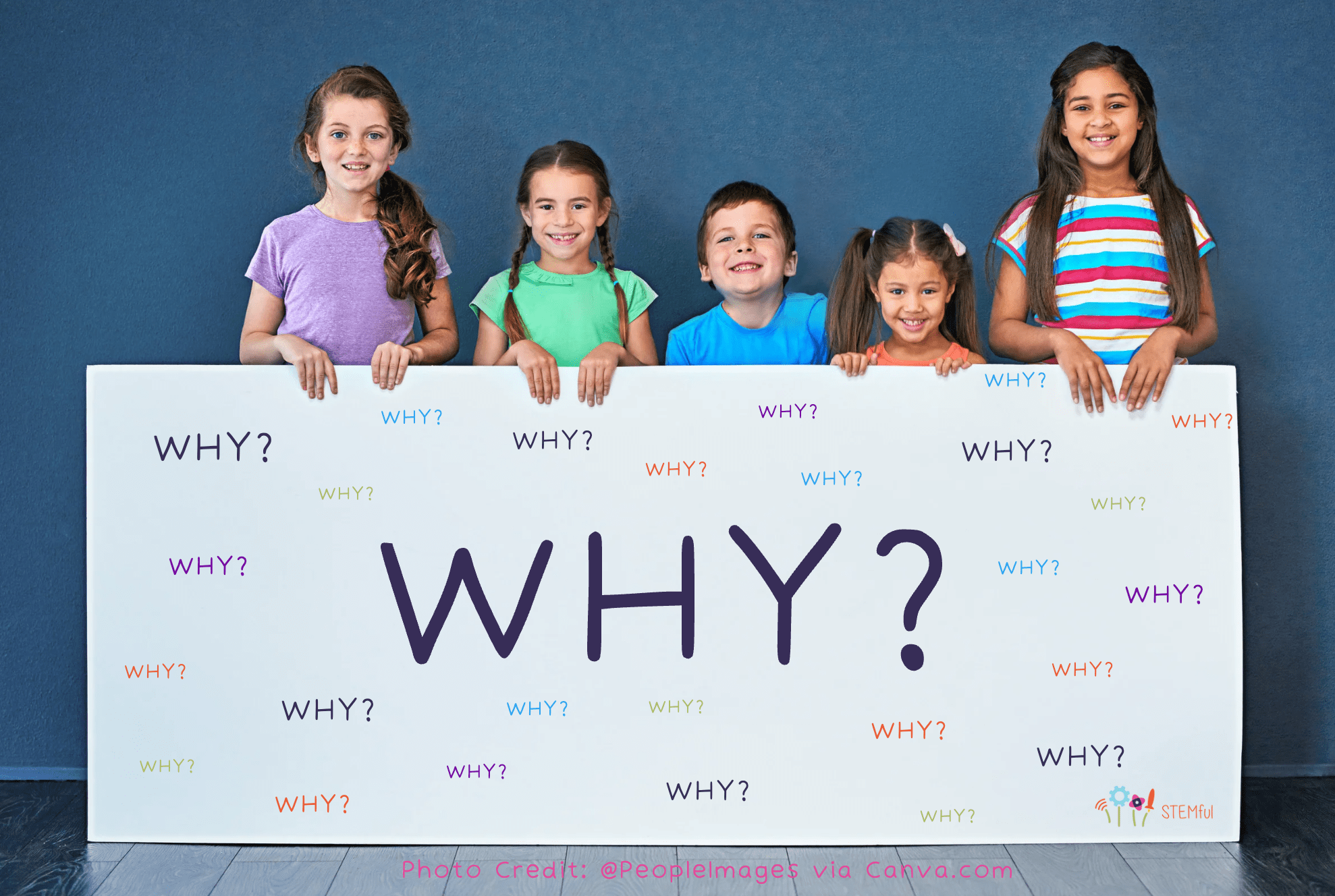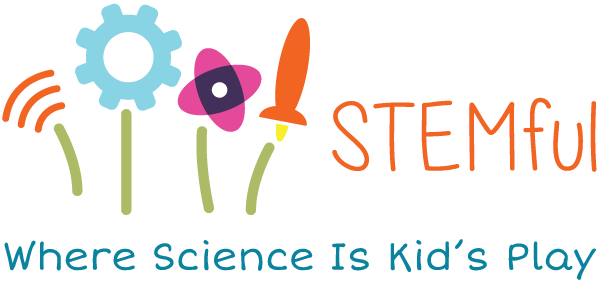If there’s one question parents dread being asked more than “When are we gonna get there?” on a long trip, it’s “Why?” And likely a slew of “whys,” in rapid succession, about absolutely anything, from why the sun comes up and why it’s so far away, to why dessert follows dinner, and everything in between.
When you’ve run out of answers, use the opportunity to teach kids about coming up with some of their own by thinking like a scientist. How? By forming a hypothesis! Read on for a refresher on what it is and ideas for turning some of those everyday “whys” into opportunities for STEM-based learning with activities you can do with your kids.

The Scientific Method
At STEMful, we incorporate the scientific method into our school break camps and after-school programming to help kids become familiar with one of the cornerstones of scientific study. The first three steps will take you from the question to making an educated guess about the answer.
Step 1: Start with a Why (or When or How)
The first step of the scientific method is a question, so asking “why”—or “when” or “how”—or rephrasing the question as a yes-or-no query, is the perfect way to begin. For example, the perennial problem of ants raiding a picnic or coming indoors might spark the question, “Do ants prefer salty or sweet (or fatty) foods?”
Step 2: Review What You Know
Next, conduct a little background research. For more complex questions, learning how to research using the local library, or promoting digital literacy by locating reliable online sources can help kids learn where to go for information they can trust. But it doesn’t necessarily require an internet search or a trip to the library. Instead, it can be as informal as taking stock of what you know about the topic at hand. In our example, if ants have made an appearance in your home, what do they seem to be attracted to? On a family road trip, it may not be practical to conduct an experiment to answer the question, but by asking more questions, you can tease out what you know about the topic to help you get to step three.
Step 3: Make a Hypothesis
Now that you have a question and did a little research, it’s time for step three. If you or your kids have participated in a school science fair before, you may remember having to come up with a hypothesis for the project. What is a hypothesis? It’s a theory phrased as a statement that answers the question posed in step one. In our example, it might be “Ants prefer sweet to salty or fatty foods.”
Step 4: Test the Hypothesis
Once you have a hypothesis, it’s time to try an experiment to test it! Designing the experiment can be both creative and methodical. Be sure to encourage kids to keep a lab notebook (or for little ones, to help them take notes) about their findings. And one of the most important things to impart to kids about their experiment is that hypotheses are often wrong. In fact, it’s built into the process. If a hypothesis isn’t proven by the experiment, it’s time to make a new one! Tweak the hypothesis and start again. That’s why the scientific method—and STEM learning in general—is an ideal opportunity to help kids learn from failure and to build resilience.

Mini Experiments for Testing Hypotheses
If you’re not dealing with an ant invasion, or if your children’s interests just skew in a different direction, try one of these mini experiments with household materials to get them started.
Question 1: Which Fruit Will Brown Fastest?
- Start with two or three pieces of fruit. Two different apples (ideally a sweet and a tart one), or an apple and a pear, or apples and bananas are all good options. Whatever you choose, be sure it’s light in color so the browning (oxidation) is easy to see.
- Ask kids to develop a hypothesis stating which food will brown the fastest. Ask why they made that hypothesis.
- Conduct the experiment over an hour or two with the fruit in the open air. At 15-minute or half-hour intervals, observe the fruit, making notes about each’s appearance.
- When the experiment is over, compare the results to the hypothesis. Was it correct? Try the experiment with other fruits to make a new hypothesis.
Question 2: Will a Wet Paper Towel Sprout a Seed Faster Than Dry Soil?
- Start with the same type of seeds (bean seeds work well). Fill a small disposable or compostable cup, or a clean take-out container, with dry potting soil. (If the soil is damp and fresh, be sure to let it sit out for a few days to dry it out.) Place a seed near the top of the soil so you can easily find it, and cover it lightly with a little more soil.
- Wet a paper towel and place it in a ziplock bag. Place a seed on top of the paper towel. Seal the bag. Place both in a warm spot.
- Ask kids to develop a hypothesis about what they know plants need. Each day, check on the seeds and write down any observations.
- After five days, remove the seeds from their growing mediums and note the result. Which sprouted? If both sprouted, which sprout is larger? How do the results compare to the hypothesis? Ask kids why they think the experiment turned out the way it did.

The next time your kids pepper you with “whys,” nurture their inquisitiveness and redirect it into scientific investigation. And for more structured ways to incorporate STEM into your child’s day, sign your little ones up for one of our programs and help support their curiosity for science.
